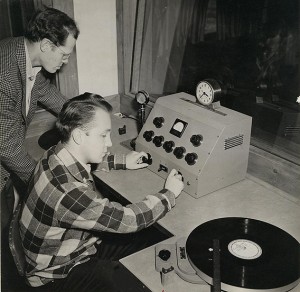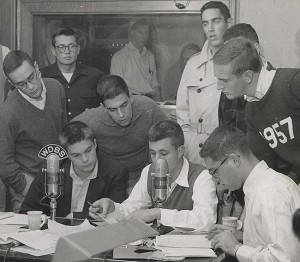On Saturday, April 30, 2016 Dartmouth College in Hanover, NH will celebrate dual milestones: the 75th anniversary of student broadcasting and the 40th anniversary of WFRD-FM, one of the rare commercially-operated student stations in America.

Director of Broadcasting Heath Cole says there will be three panel discussions followed by an evening banquet featuring past and present station personnel.
- 9:00-11:00 a.m. – The Evolution of Radio at Dartmouth: Student Learning for 75 Years”
- 11:30 a.m.-1:00 p.m. – Speaking on Inclusion: Participation and Cultural Expression at Dartmouth Broadcasting
- 2:00-3:30 p.m. – The Future and Influence of Radio, Media and Dartmouth Broadcasting
Dartmouth, of course, is steeped in history; the college dates back to 1769. It’s broadcast roots extend all the way to the infancy of wireless. In 1917 an amateur radio club started ham station W1ET. In May of 1923 station 1YB was on the air on the 80-meter wavelength using twin 90-foot towers built by students atop Wilder Hall.

The transition to commercial broadcasting came in fits and starts. On October 18, 1924 WFBK was licensed with 100 watts of power at 1170 KHz. The following September the station was renamed WDCH. However, Dartmouth Trustees ended the venture on January 9, 1926 after deciding the operating expenses outweighed the promotional value.
On September 29, 1941 – WDBS began operating on 540 KHz as a carrier current station (piped through college buildings on copper wire). It was shut down from 1943-46 because of World War II.
The FCC issued a new license for 250-watt WDCR which aired its first broadcast at 1340 KHz on March 4, 1958. The facility cost $12,5000 to build. The college added WFRD FM 99.3 MHz in 1976. WFRD is a longtime member of NHAB.
A victim of changing tastes and technology, Trustees requested that the FCC cancel the license for WDCR AM 1340; it was deleted on September 8, 2010.
The WFRD website features numerous photos of past broadcasting activities. For details on the anniversary observance contact Heath Cole.
